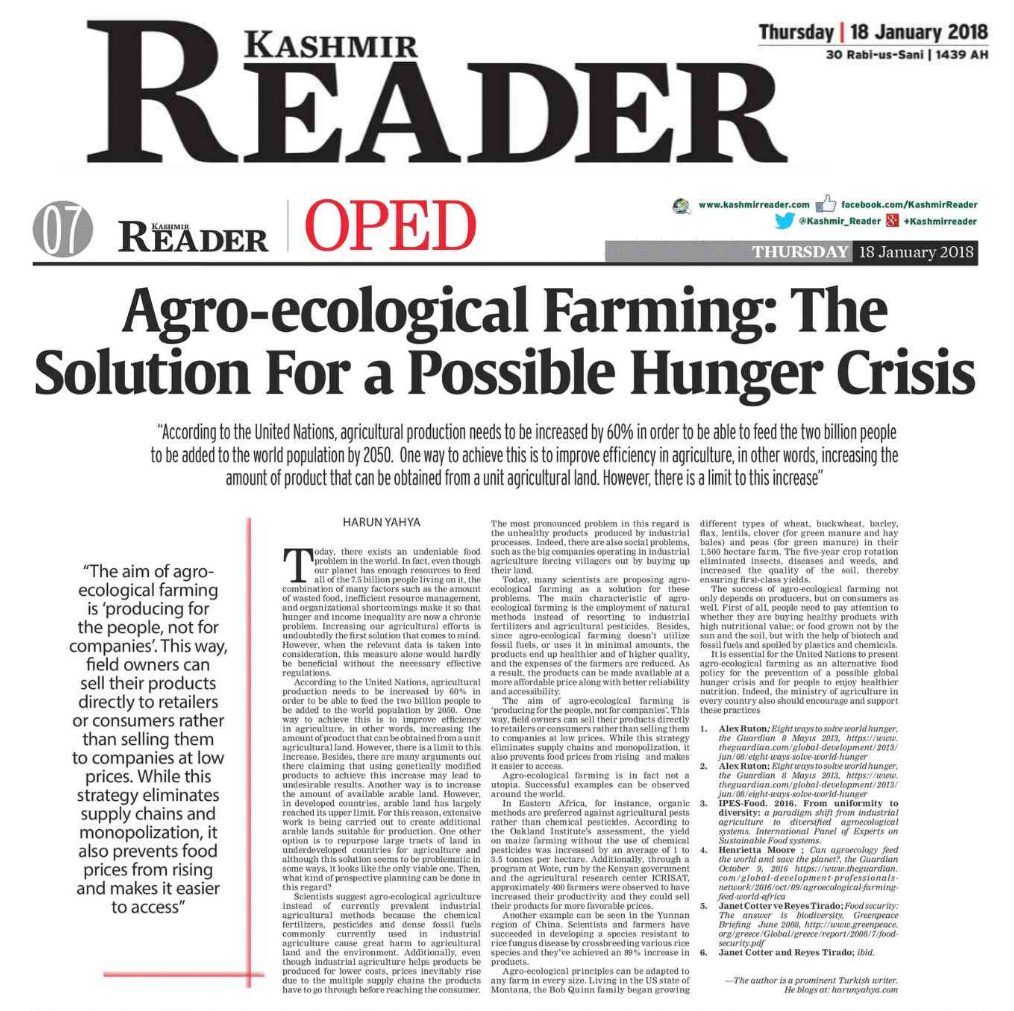
Today, there exists an undeniable food problem in the world. In fact, even though our planet has enough resources to feed all of the 7.5 billion people living on it, the combination of many factors such as the amount of wasted food, inefficient resource management, and organizational shortcomings make it so that hunger and income inequality are now a chronic problem. Increasing our agricultural efforts is undoubtedly the first solution that comes to mind. However, when the relevant data is taken into consideration, this measure alone would hardly be beneficial without the necessary effective regulations.
According to the United Nations, agricultural production needs to be increased by 60% in order to be able to feed the two billion people to be added to the world population by 2050. One way to achieve this is to improve efficiency in agriculture, in other words, increasing the amount of product that can be obtained from a unit agricultural land. However, there is a limit to this increase. Besides, there are many arguments out there claiming that using genetically modified products to achieve this increase may lead to undesirable results. Another way is to increase the amount of available arable land. However, in developed countries, arable land has largely reached its upper limit. For this reason, extensive work is being carried out to create additional arable lands suitable for production. One other option is to repurpose large tracts of land in underdeveloped countries for agriculture and although this solution seems to be problematic in some ways, it looks like the only viable one. Then, what kind of prospective planning can be done in this regard?
Scientists suggest agro-ecological agriculture instead of currently prevalent industrial agricultural methods because the chemical fertilizers, pesticides and dense fossil fuels commonly currently used in industrial agriculture cause great harm to agricultural land and the environment. Additionally, even though industrial agriculture helps products be produced for lower costs, prices inevitably rise due to the multiple supply chains the products have to go through before reaching the consumer. The most pronounced problem in this regard is the unhealthy products produced by industrial processes. Indeed, there are also social problems, such as the big companies operating in industrial agriculture forcing villagers out by buying up their land.
Today, many scientists are proposing agro-ecological farming as a solution for these problems. The main characteristic of agro-ecological farming is the employment of natural methods instead of resorting to industrial fertilizers and agricultural pesticides. Besides, since agro-ecological farming doesn’t utilize fossil fuels, or uses it in minimal amounts, the products end up healthier and of higher quality, and the expenses of the farmers are reduced. As a result, the products can be made available at a more affordable price along with better reliability and accessibility.
The aim of agro-ecological farming is ‘producing for the people, not for companies’. This way, field owners can sell their products directly to retailers or consumers rather than selling them to companies at low prices. While this strategy eliminates supply chains and monopolization, it also prevents food prices from rising and makes it easier to access.
Agro-ecological farming is in fact not a utopia. Successful examples can be observed around the world.
In Eastern Africa, for instance, organic methods are preferred against agricultural pests rather than chemical pesticides. According to the Oakland Institute’s assessment, the yield on maize farming without the use of chemical pesticides was increased by an average of 1 to 3.5 tonnes per hectare. Additionally, through a program at Wote, run by the Kenyan government and the agricultural research center ICRISAT, approximately 400 farmers were observed to have increased their productivity and they could sell their products for more favorable prices.
In Eastern Africa, for instance, organic methods are preferred against agricultural pests rather than chemical pesticides. According to the Oakland Institute’s assessment, the yield on maize farming without the use of chemical pesticides was increased by an average of 1 to 3.5 tonnes per hectare. Additionally, through a program at Wote, run by the Kenyan government and the agricultural research center ICRISAT, approximately 400 farmers were observed to have increased their productivity and they could sell their products for more favorable prices.
Another example can be seen in the Yunnan region of China. Scientists and farmers have succeeded in developing a species resistant to rice fungus disease by crossbreeding various rice species and they’ve achieved an 89% increase in products.
Agro-ecological principles can be adapted to any farm in every size. Living in the US state of Montana, the Bob Quinn family began growing different types of wheat, buckwheat, barley, flax, lentils, clover (for green manure and hay bales) and peas (for green manure) in their 1,500 hectare farm. The five-year crop rotation eliminated insects, diseases and weeds, and increased the quality of the soil, thereby ensuring first-class yields.
The success of agro-ecological farming not only depends on producers, but on consumers as well. First of all, people need to pay attention to whether they are buying healthy products with high nutritional value; or food grown not by the sun and the soil, but with the help of biotech and fossil fuels and spoiled by plastics and chemicals.
It is essential for the United Nations to present agro-ecological farming as an alternative food policy for the prevention of a possible global hunger crisis and for people to enjoy healthier nutrition. Indeed, the ministry of agriculture in every country also should encourage and support these practices.
0 comments:
Post a Comment